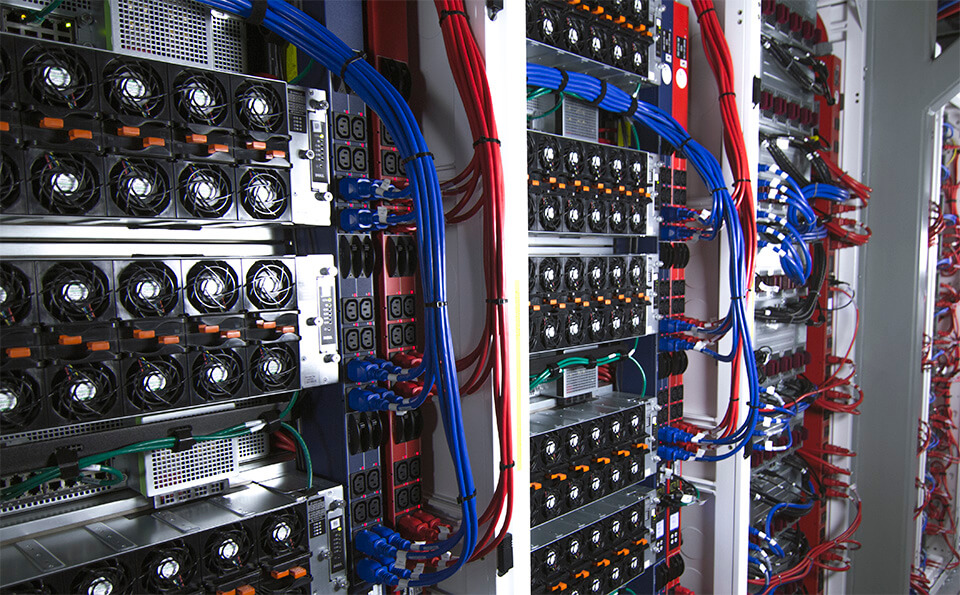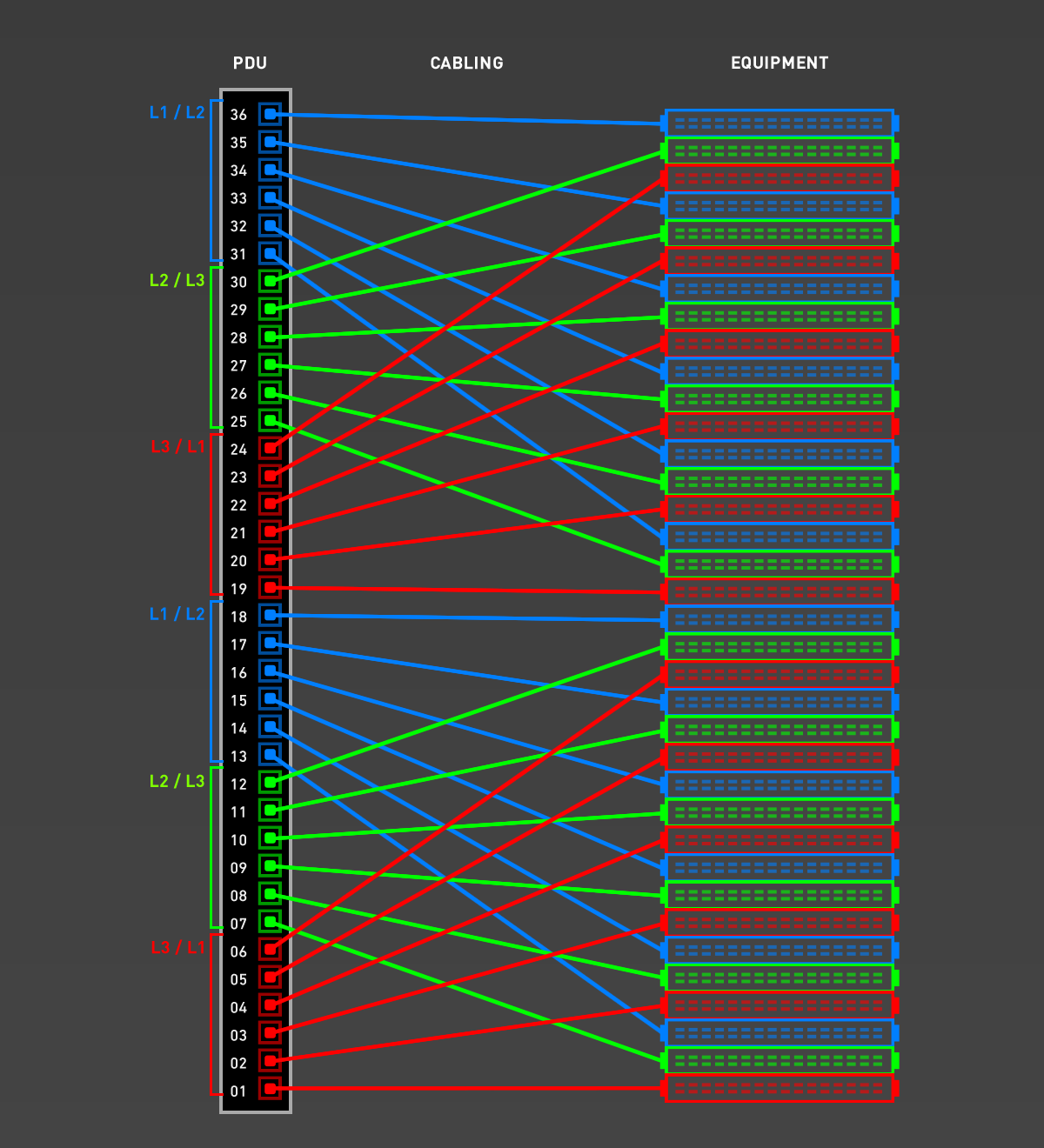博客
主页 » 博客 » Data Center Cabinet Load Balancing: there’s a less complicated way.
Data Center Cabinet Load Balancing: there’s a less complicated way.
Posted on March 28, 2017 by Gento

Why do we load balance?
Without going into the complicated math, suffice it to say that load balancing in a 3 phase system is desirable. The more unbalanced a system the more problems it creates. UPS life, for one, can be affected by unbalanced systems. Although one circuit (server cabinet) being out of balance won’t have much effect, if many or all circuits on a panel are out of balance, the main circuit supplying the breaker panel will be out of balance and this can ruin your upstream UPS. There are also efficiency issues with unbalanced loads.
How is load balancing currently accomplished in a rack cabinet?
To balance a load in a cabinet, the loads of the equipment power supplies are spread across the 3 phases – L1/L2, L2/L3, L3/L1. This is done by plugging the first server (or switch/router) in an outlet wired on L1/L2, the next server on L2/L3, the next on L3/L1, then start over. The goal is to get an equal number of devices/loads on all 3 phases – or as close as possible.
This approach can quickly turn into a cabling nightmare. Most rack PDUs are linear in their phase layout of outlets – there are only three banks of outlets, one for each phase. For example, on a 36 outlet PDU, outlets 1 through 12 will be on L1/L2, 13 through 24 on L2/L3, and 25 through 36 on L3/L1. If you use the above method of balancing, and start racking the devices at the bottom U position, the third device you plug in will need to reach the top third of the PDU and the last device may have to reach back to the bottom of the PDU. In other words, a lot of crisscrossed cabling.
How do Raritan’s balance the cable and load balancing challenge?
In certain Raritan PX three-phase models the architecture gets around the cabling issue by staggering the grouping of outlets - there are at least 6 banks of outlets. For example, outlets 1 through 6 are on L1/L2, 7 through 12 on L2/L3, 13 through 18 on L3/L1, but then we start over at L1/L2 for outlets 19 through 24. (See Illustration below)
This intelligently engineered architecture results in more reliability and easier execution. The devices towards the top of the cabinet don’t need to be plugged in to the bottom of the PDU and devices at the bottom don’t need to be plugged in to the top.

The Result
By using Raritan’s alternate circuit phase sequencing, you will be able to more easily and efficiently balance your cabinet load. The approach simplifies deployment of IT devices and balances the three lines to get the most power headroom. Also, tracing a power cord to a device becomes much easier and thus, unplugging the wrong device during maintenance or replacement will be less likely. Resulting in less downtime… always a good thing!
Other Blog Posts
- The cascade effect of data center failure on businesses - why sensors are essential
- Posted on November 5, 2023
- 人工智能的快速发展和使用力登PDU满足更高的电力需求
- Posted on October 11, 2023
- Data Center Report Fewer Outages, But Downtime Still Costly
- Posted on September 20, 2023
- Survey: Energy Usage and Staffing Shortages Challenge Data Centers
- Posted on September 20, 2023
- 力登安全交换机(RSS):安全NIAP 4.0兼容式桌面型KVM
- Posted on September 20, 2023
力登官方微信公众号
力登官方微信公众号

近期活动
- New Zealand Cloud & Datacenter Convention 2022
- 3 November 2022, 9am – 4pm • Grand Millennium Hotel, Auckland, New Zealand
- Data Centre World Singapore
- 12th – 13th Oct 2022
- Korea Cloud & Datacenter Convention 2022
- 6th Oct 2022
- Philippines Cloud & Datacenter Convention 2022
- 4th Aug 2022
- JANOG50 Meeting Hokkaido
- 3th – 15th July 2022
力登最新新闻
- 重振数据中心行业—罗格朗重磅推出两款革命性的智能机架式PDU!
- Posted on May 1, 2023
- 独家专访丨惠州如何升级制造业?法资企业CEO提了个建议
- Posted on December 2, 2021
- 力登公司推出MasterConsole®数字双显示器KVM切换器
- Posted on February 18, 2021
- Legrand Data, Power and Control Division Announced as Finalist in Six Categories at DCS Awards 2020
- Posted on November 9, 2020
- 力登公司(Raritan)推出新型智慧型机架控制器(SRC),用于智能地管理数据中心和关键基础设施中的环境和安全信息
- Posted on November 9, 2020